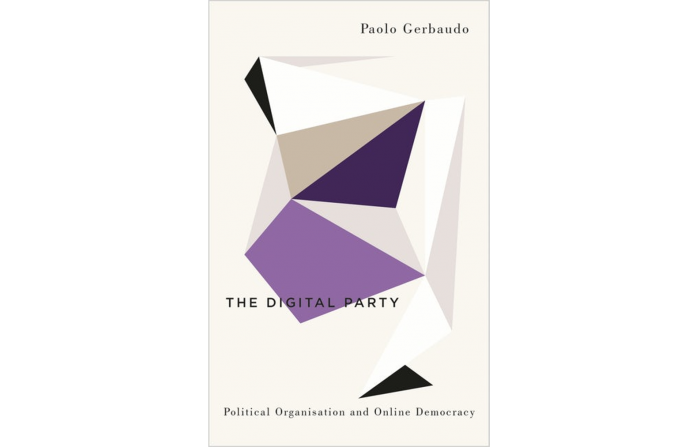(THIS ARTICLE IS MACHINE TRANSLATED by Google from Norwegian)
Within the last ten to fifteen years, a number of new political parties have emerged in Western Europe, so-called digital parties. These use online platforms in the mobilization of voters and members. Those who try to conduct politics in a different way are examples such as the Beppe Grillo Five Star Movement in Italy and the Spanish Podemos, and in the Nordic Pirate Party in Sweden and Iceland – and the Alternative in Denmark.
In his new book The Digital Party political sociologist Paolo Gerbaudo takes a critical look at these digital parties and anchors them in a longer historical analysis of the transformations that have taken place within representative democracy in the West over the past 100 years. As Gerbaudo writes, we are dealing with a more general development, with social media playing an increasingly important role in national democracies and the political public.
The mass degeneration of the mass party opened the door to the TV party.
Berlusconi is the obvious example.
Politicians communicate to voters directly through Facebook or Twitter – Trump is an obvious example of the latter – but real digital participation parties have emerged as well. The digital parties are not only characterized by the attempt to adapt to a new media publicity, no, the digital parties take the new media conditions as a starting point and try to rethink the politics based on the new conditions. The digital parties are experimenting with the new media in order to reinvent the party form and to eliminate the distance that has arisen between the political leaders and the population. It is thus not a question of supplementing party politics as we know it, but of rethinking the party form itself in order to make it more horizontal and inclusive.
Digital democracy
The gradual disintegration of neoliberal globalization of politics in business forms the political-historical background of the digital parties. They promise to remedy the oligarchy of representative democracy and resolve the political crisis that most national democracies are currently experiencing to varying degrees after the financial crisis – where governments quickly socialized bank debt and implemented savings in already eroded welfare programs.
Gerbaudo shows how the new digital parties are a continuation of previous protests against the erosion that has taken place with the political system. The digital parties can thus be seen as a continuation of the neoliberal movement's critique of the neoliberal movement in the late 1990s and the anti – austerity policy of the occupying movements since 2011. Podemos is, of course, the best example of how protest movements are pursued in political parties. That is the political context of the new digital parties.
An equally important factor in the emergence of the new parties is, of course, what we might call the third industrial or digital revolution. As Gerbaudo writes, we live in an era of optical cables, broadband and smartphones, where society is governed to an unprecedented degree by information and communication processes. The digital parties are children of this development and are trying to use the new technological possibilities. Gerbaudo calls it platform democracy. There is a clear techno-utopian vision in the various digital parties. Not only must new social media re-establish a connection between the political system and the population, it must also lead to a capitalist modernization. None of them are really anti-capitalist. It is more about exploiting the new technological opportunities and letting them benefit the population.
From the mass party to the TV party to the digital party
In the book, Gerbaudo outlines a longer historical course that goes from the mass parties of the inter- and post-war period to the television parties of the 1980s and 1990s until today and the new digital parties. As he writes, one can understand the various party forms as political versions of the factory, the fan club and the start-up company, respectively. The large mass parties belonged to the time of the industrialized labor movement, where a growing part of the population worked in factories and understood themselves as part of the working class culture that the organizations of the labor movement actively created. As he writes, however, the mass party was slowly eroded and today stands just as a shell of what it once was. This is the case even in Scandinavia, where the Social Democrats have no progressive political project, but simply want to preserve a former welfare state.

The slow degeneration of the mass party opened the door to what Gerbaudo calls the TV party. Berlusconi is the obvious example. The TV party is completely different from the mass party; it does not need members as the leader communicates directly to the voters or fans through television well assisted by consultants and spin doctors. Politics becomes a matter of personality and likeability or the ability to stage itself as something other than a political system – which, as European economies shrink, abandons the expansive social, housing and cultural policies of the 1950s and 1960s. The TV party is resentment-based and turns up the racism that is inherent in the national democracies. This creates new fracture surfaces. Where the mass party was originally a class party, the TV party potentially appeals to everyone in the national democracy (of course not to refugees and migrants who are presented as external threats to the national community). This development is difficult for mass parties to resist, and we have therefore seen them one by one begin to compete for racist voices in virtually all European publics.

We are dealing with a process in which the mass parties merge with national democracy and the state. We are still living in the collapse of the mass parties. The digital parties are a reaction to the gradual emptying of the mass party and the apathy that the mass party and the TV party each express in their own way today. The digital parties are attempts to reactivate citizens, that is how they present themselves, as democratic experiments. It's about participating. The disillusioned voters and the sofa voters must be transformed into active netizens.
Facebook's political page
But as Gerbaudo shows, it is more about the political form of platform capitalism than about genuine democratic experiments. The new digital parties appear in many ways most of all as Facebook's political page. The online platforms used by the Five Star Movement and Podemos are similar to Facebook. Members can sign up with a single click and then receive a steady stream of messages that they are encouraged to relate affirmatively to. Like Facebook, the parties collect a lot of data about their members and their preferences, and the digital parties live like Facebook and Google, so to speak, from the free (political) work that members contribute through their online participation.
The TV party is resentment-based and is screwing up the racism that
are the inherent national democracies.
Buzzword for the digital parties is participation, but as Gerbaudo writes, it is an individualized participation that fits in with the neoliberal individualization. And participation is largely limited to following, like and validate the decisions of the digital party leaders. As Gerbaudo points out, the digital parties are merely hierarchical in a different way than the traditional parties. Members recognize themselves in the hyper-leader, which members follow, applaud, and affirm in a kind of reactive feedback democracy. The platform party is characterized by a distributed centralization, where the hyper-leader's proposal is almost never rejected by the members. Gerbaudo speaks of the members' "benevolent submission" during a digital Caesar. Gerbaudo does not go that far, but the conclusion must be that the digital parties are more a symptom of a collapse than they present any way out of the political problems we are facing.






